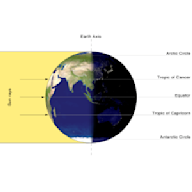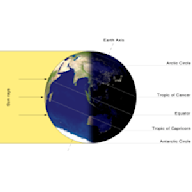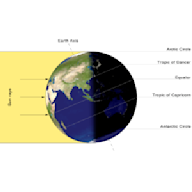Search results
People also ask
When is the March equinox?
When is the vernal equinox?
What is the difference between March and September equinox?
When do equinoxes occur?
When is the second Equinox?
When is the spring equinox?
The March equinox [7] [8] or northward equinox [9] is the equinox on the Earth when the subsolar point appears to leave the Southern Hemisphere and cross the celestial equator, heading northward as seen from Earth.
- Sun Crosses Celestial Equator
- Why Does The Sun Move North and South?
- Why Is It called “Equinox?”
- The Equinoxes and The Seasons
- Measuring The Tropical Year
- Why Does The Date Vary?
- GeneratedCaptionsTabForHeroSec
The March equinox is the moment the Sun crosses the celestial equator—an imaginary line in the sky above Earth’s equator—from south to north. This happens on March 19, 20, or 21every year. 10 facts about the March equinox
During the course of a year, the subsolar point—the spot on the Earth's surface directly beneath the Sun—slowly moves along a north-south axis. Having reached its southernmost point at the December solstice, it starts moving northward until it crosses the equator on the day of the March equinox. The June solsticemarks the northernmost point of its ...
On the days of the equinoxes, the Earth’s axis is perpendicular to the Sun’s rays, meaning that all regions on Earth receive about the same number of hours of sunlight. In other words, night and day are, in principle, the same length all over the world. This is the reason it’s called an “equinox,” derived from Latin, meaning “equal night.” However,...
The March and September equinoxes mark the beginning of the spring and autumn seasons on Earth, according to one definition. The equinox in March is the start of spring in the Northern Hemisphere and the beginning of fallsouth of the equator. Equinox and solstice dates—years 1-2149
The March equinox can be used to measure a tropical year, the mean time it takes for the Earth to complete a full orbit around the Sun. Also known as a solar year, a tropical yearis approximately 365 days, 5 hours, 48 minutes, and 45 seconds long. It can vary by up to 30 minutes each year. Tropical years from 1900 to 2100
The date of the equinoxes and solstices varies because a year in our calendar does not exactly match the length of the tropical year—the time it takes the Earth to complete an orbit around the Sun. Today's Gregorian calendar has 365 days in a common year and 366 days in a leap year. However, our planet takes about 365.242199 days to orbit the Sun. ...
Learn when and why the March equinox happens, and how it marks the start of spring in the Northern Hemisphere. Find out the date, time, and location of the equinox, and explore its history and significance.
Learn about the March equinox, when the sun crosses the celestial equator and brings spring to the Northern Hemisphere. Find out how the equinox affects day and night, sunrise and sunset, and more.
- 4 min
- 2025
The Equinox in the Northern Hemisphere occurs twice a year around 20 March (the spring equinox) and around 22 September (the autumn equinox). They occur between the summer and winter...
Learn about the date, time, and significance of the March equinox, when day and night are almost equal around the world. Discover facts, experiments, and cultural celebrations related to this astronomical event.
Mar 15, 2017 · Learn about the vernal equinox, when the amount of daylight and darkness is nearly the same in March. Discover the history and traditions of this astronomical event around the world.





